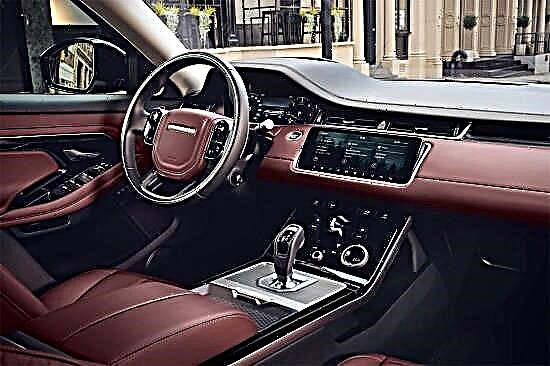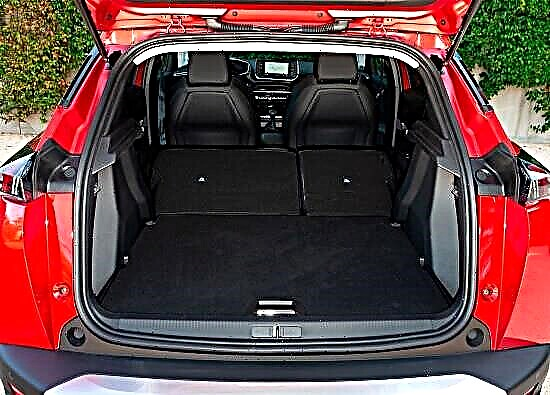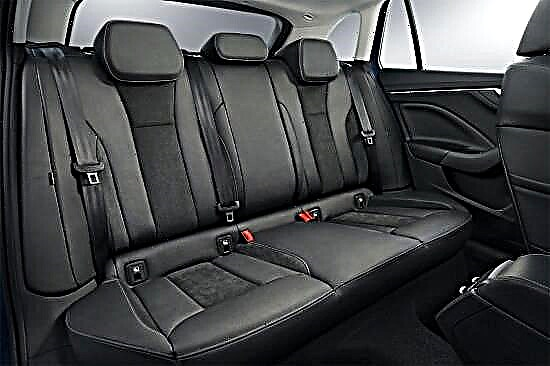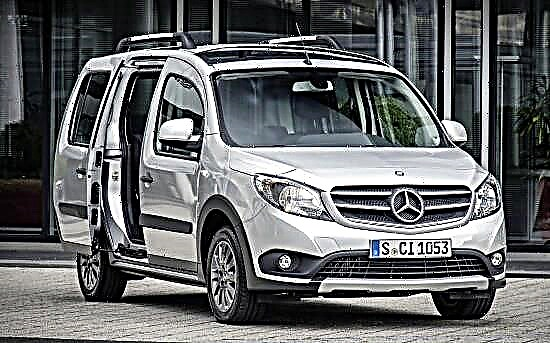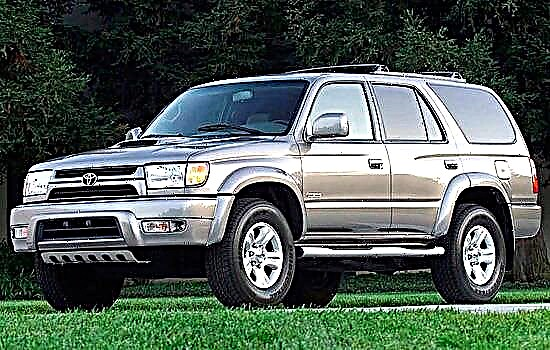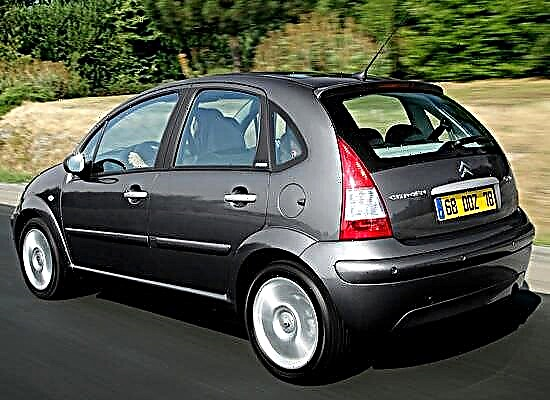It just so happened that the overwhelming number of small and inexpensive cars "shoe" mainly in the budget "fifteenth" size. Moreover, many Russian car enthusiasts put 15-inch wheels even on rather expensive cars. And the point here is not only the lower cost of tires of this size, but also the fact that they are preferable on our roads - a higher profile is more resistant to loads, more durable and more comfortable, and to a certain extent protects the "consumable parts" of the suspension from impacts ...
Despite the current trend, many tire manufacturers are indifferent to the budget dimensions of tires, which can be explained quite simply - for such companies, income no longer depends on the number of automobile “shoes” sold, but on the standard sizes. But at the same time, there are manufacturers who are literally fighting for leading positions in the Russian market, making improvements in their products every year, trying to outperform competitors in a number of parameters (especially in terms of adhesion properties).

It is for this reason that the tires were tested: Nokian Hakka Green 2 of the Russian "assembly" and Continental ContiPremiumContact 5, produced in the Czech Republic (their cost is ~ 3350 and 4000 rubles, respectively) - which have been on sale for a long time, but are annually revised.
The upper price bar was set by the Japanese Bridgestone Turanza T001 tires for 4200 rubles; along with which the not new Goodyear EfficientGrip Performance model (3400 rubles), produced in Poland, was in the "top 5".
The middle price segment was presented by Yokohama BluEarth-A AE-50 and Toyo Proxes CF2 tires - both of them cost ~ 3250 rubles (the first are "welded" in Russia, and the second - in Japan).
Among the novelties of 2018, the second generation Korean Hankook Kinergy Eco tires (3,100 rubles), the Dunlop SP Touring R1 (3,000 rubles) and the Russian model Nordman SX2 (2,800 rubles) were worn.
In addition, for comparison was taken and budget "shoes" - tires Nitto NT860, made in Malaysia and owned by the Japanese brand Toyo; and Formula Energy, which were developed by Pirelli, but manufactured in our country (they are estimated at 2600 rubles).
Tests of summer tires of standard size 195/65 R15 were carried out at the wheel of a popular golf-class car at one of the proving grounds at an ambient temperature of 20 to 27 degrees Celsius, but this was not the end of it. Additional tests were carried out in the colder months of the year in order to check how the tires feel on the cooled wet asphalt.
The first tests are something like a warm-up for tires: in this case, their protectors practically do not wear out due to low loads. All tires covered a ten-kilometer segment along the high-speed ring of the automobile range at a constant speed of 130 km / h - such a “race” not only allowed the “shoes” to warm up, but also to evaluate the behavior of the “iron horse” on the high-speed line and during soft changes.
The best directional stability was demonstrated by Formula, Nokian and Nordman tires - the car dressed in them distinguished itself by clear retention of a given direction, quick reactions to steering turns and understandable feedback. But the tires Dunlop, Bridgestone, Nitto and Toyo showed themselves not on the best side - they showed an incomprehensible wide "zero" when driving on a straight segment. In addition, on the Dunlop, the car showed pronounced understeer and delays in reactions, and on the other - on the contrary, oversteer.
The next test cycle is to test efficiency, acoustic and road comfort, ride comfort, and behavior on unpaved surfaces. In the races to measure "gluttony" at city speed (60 km / h), Toyo took the leading position, while Formula tires turned out to be in the opposite side of the rating (though the difference with the "gold medalist" was only 0.3 liters).
At a speed of 90 km / h, Toyo tires again staked out the first position along with Dunlop, Goodyear, Nitto and Yokohama. In the rearguard, this time Nokian was "trudging", but the difference with the most economical competitors did not exceed 200 milliliters for every "hundred" run.
In terms of acoustic comfort, the highest step of the podium was taken by five "test subjects" who distinguished themselves with a very low noise level - Continental, Dunlop, Nordman, Hankook and Yokohama. The loudest turned out to be Bridgestone - they stood out with an increased general hum.
When it comes to road comfort and ride comfort, Dunlop, Formula, Nordman and Nokian took the lead. True, all these tires received, albeit insignificant, comments. Goodyear became outsiders in this case: they demonstrated high rigidity, “swallowing” only large irregularities and shuddering on small ones (transverse cracks, seams, etc.).
On a dirt road, the car felt most confident on Dunlop and Nordman tires, while Nitto, Goodyear and Yokohama behaved not quite predictably - on such wheels, to overcome unpaved climbs, the driver will need to show all his skill, since they constantly slip and lose grip coated.
The next cycle of testing is the assessment of adhesion properties. And the best exercise for this is braking: the shorter the braking distance, the better the grip. At the same time, it is quite difficult to achieve good braking from rubber on different surfaces, which is why many tire workers are guided by European (smoother) asphalt. In our country, things are a little different, so it is more important to know how tires behave on rough roads.
Braking on wet asphalt was carried out from a speed of 80 km / h, and on dry - from 100 km / h. The end of the measurement is the same in both cases - 5 km / h, in order to avoid short-term blocking of the wheels and distortion of the final results. It is also worth noting here that in this discipline the tester was required to press the pedal in the same place and at the same speed, and after each ride to cool the brakes.
On dry asphalt, the highest step of the podium went to Nokian tires - their braking distance did not exceed 24.4 meters. Only 0.4 meters yielded to the leaders of Continental, while outsiders in the person of Nitto "rolled away" immediately by 28 meters.
On the wet surface, the balance of power changed: "gold" was won by Continental (37.6 meters), "silver" - Nokian (38.5 meters), "bronze" - Formula (38.7 meters). Nitto and Bridgestone tires performed worse than others: the first took 42 meters to slow down, and the second - 41 meters.
It is worth noting that on both surfaces the tire performance has improved by 15% on average, based on the figures from previous years. Of course, a certain merit in this belongs to cars that are constantly updated, but the lion's share of progress is provided by rubber.
On Russian roads, abrupt changes in traffic are quite common - for this reason, an exercise such as an imitation of a lane change was added to the tests, which makes it possible to evaluate the lateral grip properties and the behavior of the "iron horse" in general. This discipline is carried out as follows: the first race is carried out at a deliberately passing speed, after which it each time increases by 1-2 km / h until the car is kept in the designated corridor and does not touch the cones.
On the wet surface, Nokian tires turned out to be champions, demonstrating a speed of 67.8 km / h, but the "silver medalists" lost only 0.1 km / h to them. Nitto and Bridgestone were among the outsiders - 63.5 km / h and 63.6 km / h, respectively. They also received the lowest marks for handling: the former refuse to perform a tough maneuver even with a slight increase in speed, and the latter introduce instability into the reaction of the car. Dunlop also achieved similar results - they "distinguished themselves" by delays in reactions, sharp breakdowns in sliding and increased steering angles. But with Goodyear tires, a completely opposite situation developed - on them the car showed clear reactions and the most understandable behavior, which did not require anticipatory steering wheel actions.
An identical test took place on dry asphalt, while the speeds in this case exceeded 70 km / h. The best in the test were Continental and Nordman: on the first tires the car accelerated to 70.5 km / h, and on the second - to 70.4 km / h.
But the controllability in extreme modes on such a surface was a little disappointing, and six out of eleven test subjects received roughly similar ratings at once: low information content or delays and large steering angles. Hankook, Goodyear and Nokian got the best numbers with "easy claims" here. These results can probably be explained as follows: It is difficult to design tires that are narrow enough to withstand significant peak lateral loads.
According to the test results, the undisputed leader was the Nokian Hakka Green 2 tires - the car "shod" in them, distinguished itself by excellent grip on wet asphalt, decent ride and good directional stability. The Continental ContiPremiumContact 5 tires, which impressed with their quiet rolling and high grip on dry surfaces, were just a step down. Well, they closed the podium Formula Energy - they demonstrated, albeit not the best, but good grip properties, as well as a clear adherence to a given course and a decent level of comfort. However, their biggest plus is their affordable price.
It is worth noting that even the “medalists” were not without flaws: all of the above “trinity” had similar shortcomings during extreme maneuvering on dry asphalt when reaching maximum speeds. In addition to this, they have significantly reduced grip on cold wet pavement.
Hankook Energy Eco 2 and Nordman SX2 tires were also among the "excellent" ones, which were located in fourth and fifth places, respectively. Both one and the other demonstrated a good level of acoustic comfort, but at the same time the former distinguished themselves by better directional stability and smoothness of the ride, and the latter by greater tenacity when braking on dry asphalt.
The sixth position in the ranking went to Goodyear EfficientGrip Performance tires - they stood out from the competition with the best handling on wet surfaces during sharp changes of lanes, but at the same time they were also excessively rigid and not the best grip on wet asphalt.
The seventh line was occupied by the Yokohama BluEarth-A AE-50, and the eighth - by the Dunlop SP Touring R1. They showed an approximately identical level of grip and comfort, but still they were not without remarks: the former had shortcomings during extreme maneuvering on dry surfaces, and the latter had mediocre directional stability on wet asphalt.
Place at number nine was taken by Toyo Proxes CF2 tires - they showed good braking properties, but at the same time pumped up in terms of lateral grip on wet asphalt and road holding at high speed. However, this "rubber" partly compensates for its disadvantages with the least "fuel appetite".
Bridgestone Turanza T001 and Nitto NT860 were in the rearguard of the rating (but at the same time among the “good players”), taking the tenth and eleventh positions, respectively. This pair received low marks for poor braking properties both on dry and wet asphalt, as well as for not the best directional stability.
The final rating'2018 summer tires with a standard size 195/65 R15:
1. Nokian Hakka Green 2;
2. Continental ContiPremiumContact 5;
3. Formula Energy;
4. Hankook Kinergy Eco 2;
5. Nordman SX2;
6. Goodyear EfficientGrip Performance;
7. Yokohama BluEarth-A AE-50;
8. Dunlop SP Touring R1;
9. Toyo Proxes CF2;
10. Bridgestone Turanza T001;
11. Nitto NT860 (NT86A-B02).
True, if we consider the situation from the side of the benefits of a particular purchase, then the alignment of forces here changes:
The most attractive tires were Formula Energy, which were closely followed by: Nitto NT860, Nordman SX2, Dunlop SP Touring R1 and Hankook Kinergy Eco 2.
The Yokohama BluEarth-A AE-50 can be called "middlings", while the Continental ContiPremiumContact 5 and Bridgestone Turanza T001 have the worst value-to-ride ratio.

